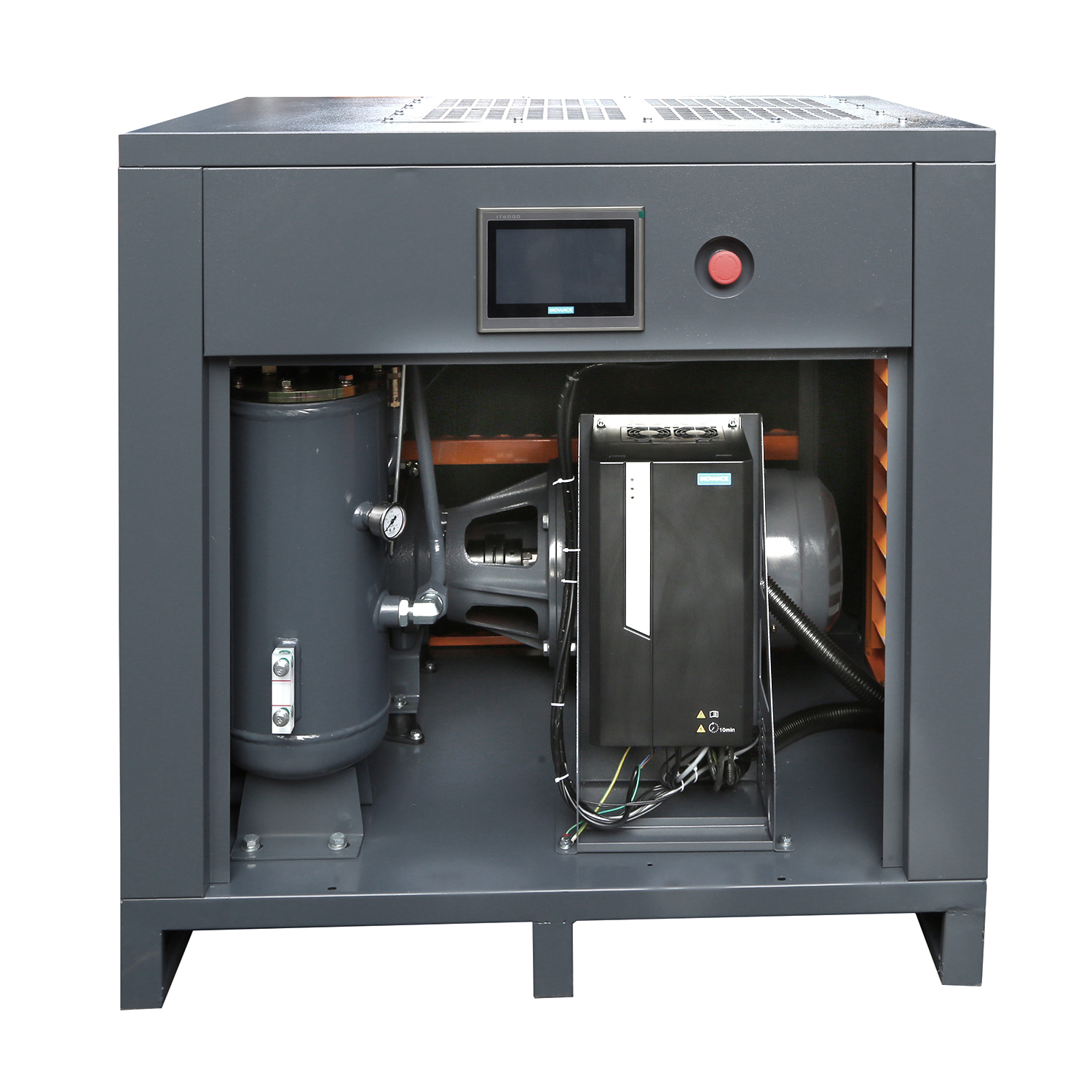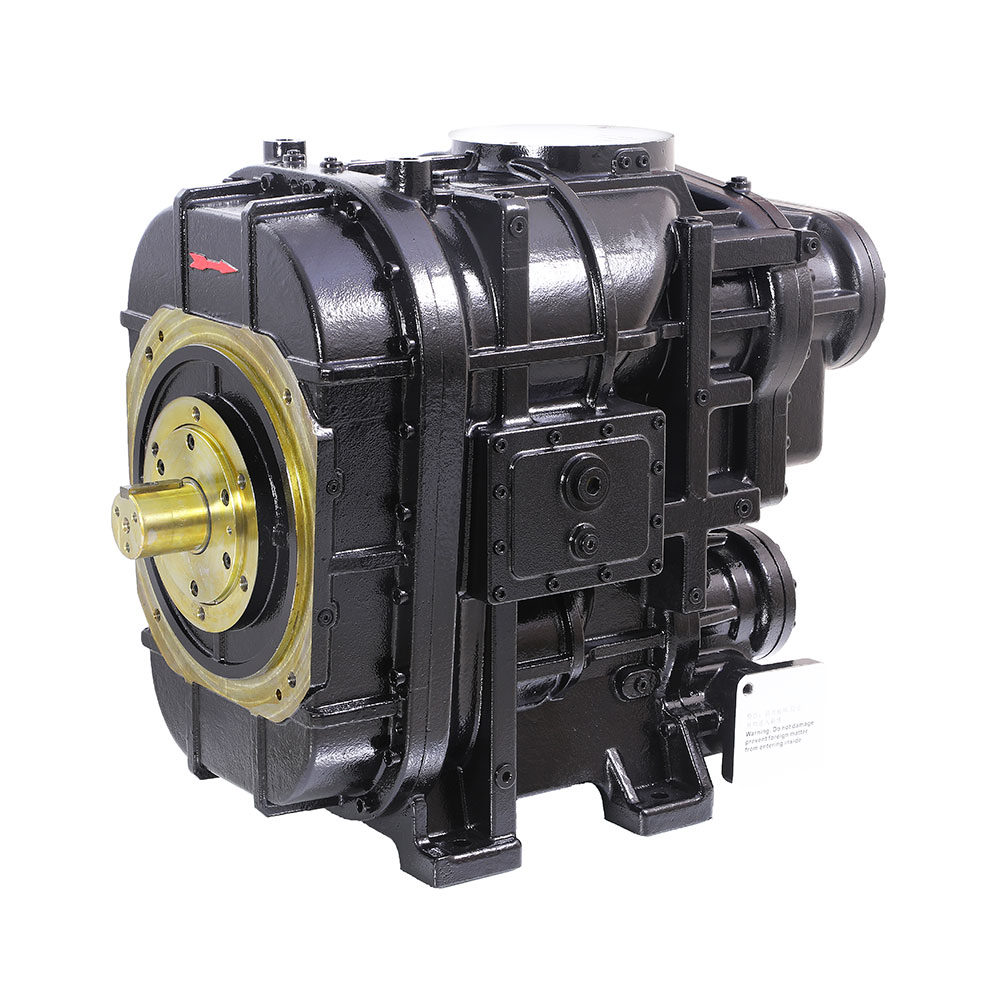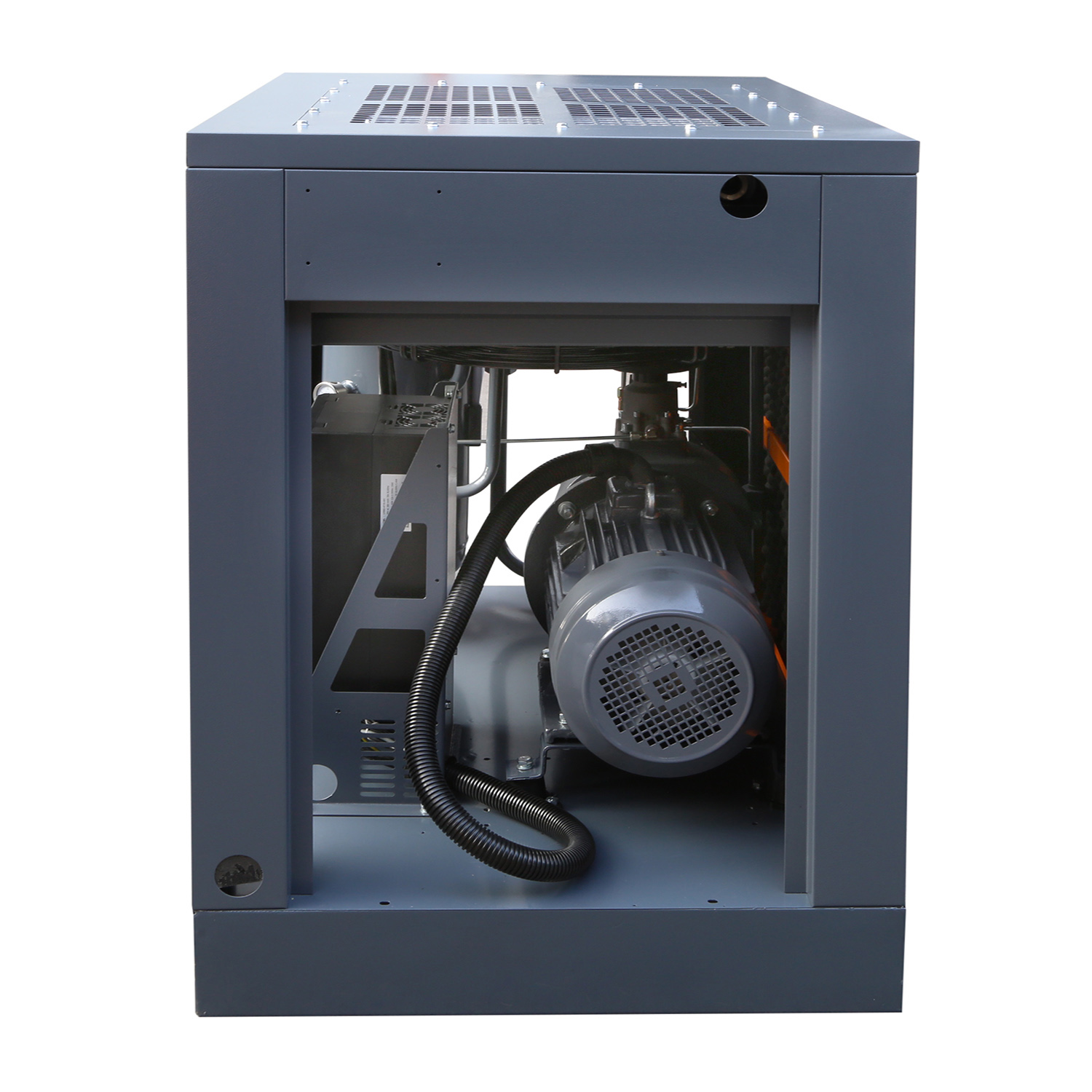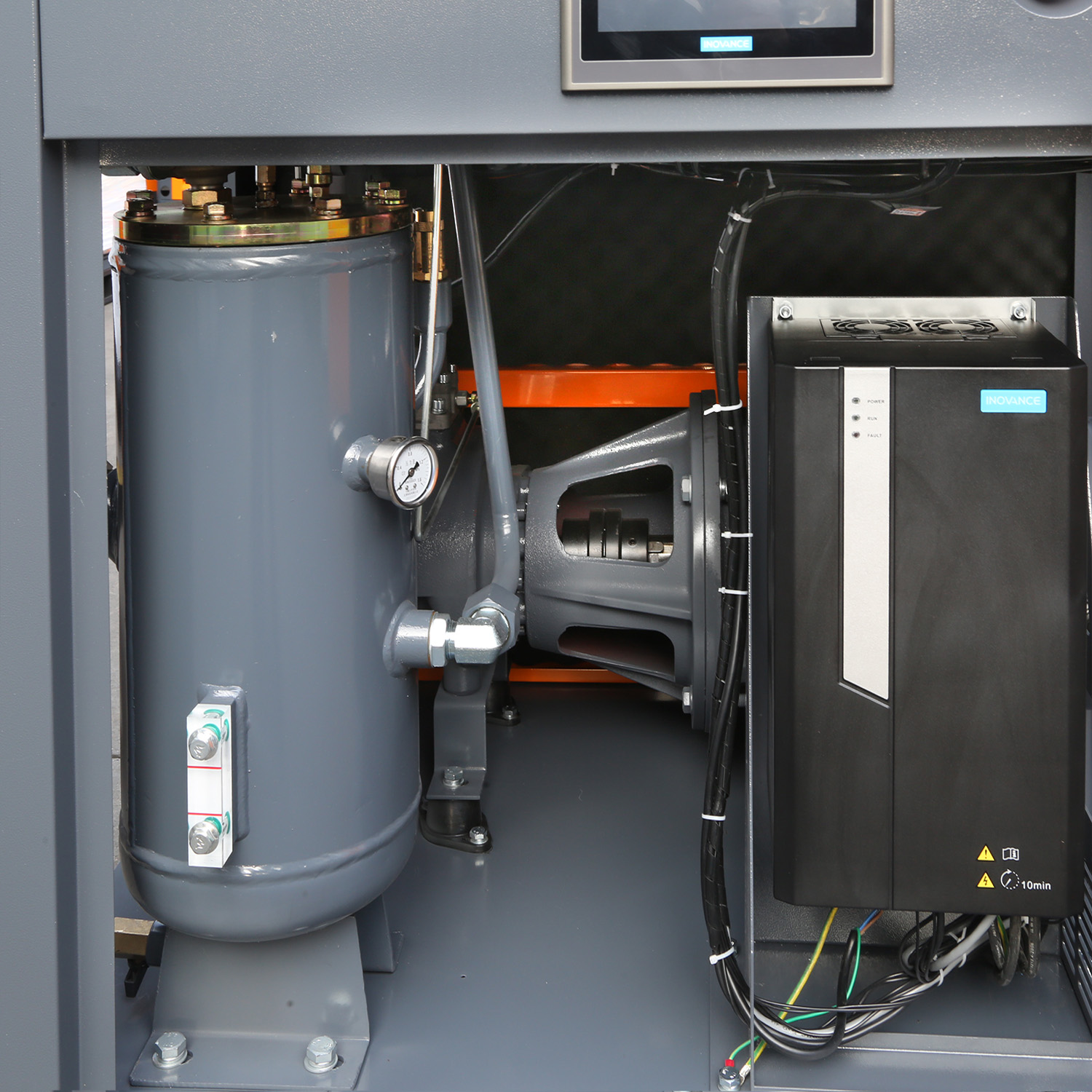1. What is the “specific power” of an air compressor?
Specific power, or “unit input specific power” refers to the ratio of the input power of the air compressor unit to the actual volumetric flow rate of the air compressor under specified working conditions.
That is the power consumed by the compressor per unit volume flow. It is an important indicator for evaluating compressor energy efficiency. (Compress the same gas, under the same exhaust pressure).
ps. Some previous data were called “volume specific energy”
Specific power = unit input power/volume flow
Unit: kW/ (m3/min)
Volumetric flow rate – the volumetric flow rate of the gas compressed and discharged by the air compressor unit at the standard exhaust position. This flow rate should be converted to the full temperature, full pressure and component (such as humidity) conditions at the standard suction position. Unit: m3/min.
Unit input power – the total input power of the air compressor unit under rated power supply conditions (such as phase number, voltage, frequency), unit: kW.
“GB19153-2009 Energy Efficiency Limits and Energy Efficiency Levels of Volumetric Air Compressors” has detailed regulations on this
2. What are air compressor energy efficiency grades and energy efficiency labels?
The energy efficiency grade is the regulation for positive displacement air compressors in “GB19153-2009 Energy Efficiency Limits and Energy Efficiency Grades of Positive Displacement Air Compressors”. In addition, provisions are made for energy efficiency limit values, target energy efficiency limit values, energy saving evaluation values, test methods and inspection rules.
This standard applies to direct-connected portable reciprocating piston air compressors, miniature reciprocating piston air compressors, fully oil-free reciprocating piston air compressors, general fixed reciprocating piston air compressors, general oil-injected screw air compressors, general Use oil-injected single-screw air compressors and generally use oil-injected sliding vane air compressors. Covers the mainstream structural types of positive displacement air compressors.
There are three energy efficiency levels of positive displacement air compressors:
Level 3 energy efficiency: energy efficiency limit value, that is, the energy efficiency value that must be achieved, generally qualified products.
Level 2 energy efficiency: Products that reach Level 2 energy efficiency or above, including Level 1 energy efficiency, are energy-saving products.
Level 1 energy efficiency: the highest energy efficiency, the lowest energy consumption, and the most energy-saving product.
Energy efficiency label:
The energy efficiency label indicates the “energy efficiency level” of the air compressor explained in the previous article.
Starting from March 1, 2010, the production, sale and import of positive displacement air compressors in mainland China must bear an energy efficiency label. Related products with an energy efficiency rating lower than level 3 are not allowed to be produced, sold or imported in mainland China. All positive displacement air compressors sold on the market must have an energy efficiency label posted in a conspicuous location. Otherwise, sales are not allowed.
3. What are the “stages”, “sections” and “columns” of air compressors?
In a positive displacement compressor, each time the gas is compressed in the working chamber, the gas enters the cooler for cooling, which is called a “stage” (single stage)
Now the latest energy-saving model of screw air compressor is “two-stage compression”, which refers to two working chambers, two compression processes, and a cooling device between the two compression processes.
ps. The two compression processes must be connected in series. From the direction of air flow, the compression processes are sequential. If two heads are connected in parallel, it cannot be called two-stage compression at all. As for whether the series connection is integrated or separate, that is, whether it is installed in one casing or two casings, it does not affect its two-stage compression properties.
In speed-type (power-type) compressors, it is often compressed by the impeller twice or more before entering the cooler for cooling. The several compression “stages” for each cooling are collectively called a “segment” . In Japan, the “stage” of a positive displacement compressor is called “section”. Influenced by this, some regions and individual documents in China also call “stage” “section”.
Single-stage compressor—gas is compressed only through one working chamber or impeller:
Two-stage compressor—the gas is compressed through two working chambers or impellers in sequence:
Multi-stage compressor—the gas is compressed through multiple working chambers or impellers in sequence, and the corresponding number of passes is the several-stage compressor.
“Column” specifically refers to the piston group corresponding to the center line of a connecting rod of a reciprocating piston machine. It can be divided into single-row and multi-row compressors according to the number of rows. Now, except for micro compressors, the rest are multi-row compression machine.
5. What is dew point?
Dew point, which is the dew point temperature. It is the temperature at which moist air cools to saturation without changing the partial pressure of water vapor. Unit: C or scared
The temperature at which humid air is cooled under equal pressure so that the unsaturated water vapor originally contained in the air becomes saturated water vapor. In other words, when the temperature of the air drops to a certain temperature, the original unsaturated water vapor contained in the air becomes saturated. When a saturated state is reached (that is, water vapor begins to liquefy and condense out), this temperature is the dew point temperature of the gas.
ps. Saturated air – When no more water vapor can be held in the air, the air is saturated, and any pressurization or cooling will lead to the precipitation of condensed water.
Atmospheric dew point refers to the temperature at which the gas is cooled to the point where the unsaturated water vapor contained in it becomes saturated water vapor and precipitates under standard atmospheric pressure.
Pressure dew point means that when a gas with a certain pressure is cooled to a certain temperature, the unsaturated water vapor contained in it turns into saturated water vapor and precipitates. This temperature is the pressure dew point of the gas.
In layman’s terms: Air containing moisture can only hold a certain amount of moisture (in the gaseous state). If the volume is reduced by pressure or cooling (gases are compressible, water is not), there is not enough air to hold all the moisture, so the excess water breaks out as condensation.
The condensed water in the air-water separator in the air compressor shows this. The air leaving the aftercooler is therefore still fully saturated. When the temperature of the compressed air drops in any way, condensation water will still be produced, which is why there is water in the compressed air pipe at the rear end.
Extended understanding: The gas drying principle of the refrigerated dryer – the refrigerated dryer is used at the back end of the air compressor to cool the compressed air to a temperature lower than the ambient temperature and higher than the freezing point (that is, the dew point temperature of the refrigerated dryer). As much as possible, allow the moisture in the compressed air to condense into liquid water and be drained. After that, the compressed air continues to be transmitted to the gas end and slowly returns to the ambient temperature. As long as the temperature is no longer lower than the lowest temperature ever reached by the cold dryer, no liquid water will precipitate out of the compressed air, which achieves the purpose of drying the compressed air.
*In the air compressor industry, dew point indicates the dryness of the gas. The lower the dew point temperature, the drier it
6. Noise and Sound Assessment
Noise from any machine is an annoying sound, and air compressors are no exception.
For industrial noise such as our air compressor, we are talking about “sound power level”, and the standard for measurement selection is “A” level noise level_-dB (A) (decibel).
The national standard “GB/T4980-2003 Determination of noise of positive displacement compressors” stipulates this
Tips: In the performance parameters provided by the manufacturer, it is assumed that the air compressor noise level is 70+3dB(A), which means the noise is within the range of 67.73dB(A). Maybe you think this range is not very large. In fact: 73dB(A) is twice as strong as 70dB(A), and 67dB(A) is half as strong as 70dB(A). So, do you still think this range is small?





